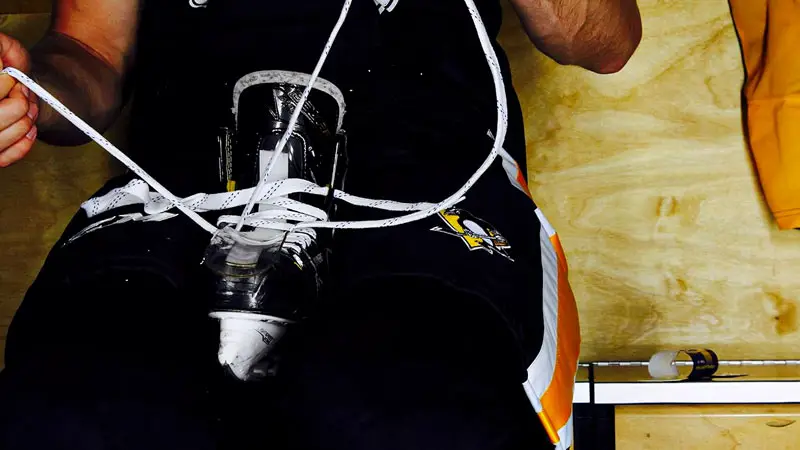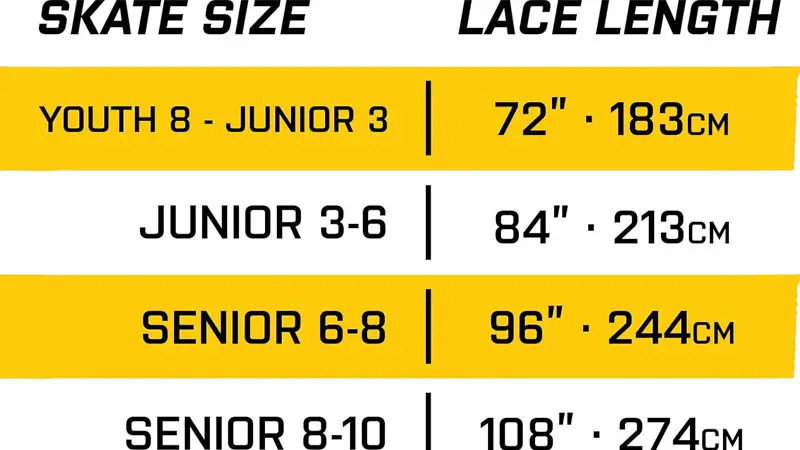In the realm of hockey, every detail matters. From the curve of your stick to the sharpness of your blades, each element contributes to on-ice performance.
One often overlooked aspect is the lacing of your skates. Proper lacing can significantly enhance comfort, support, and ultimately, your game.
This comprehensive guide explores the nuances of hockey skate lacing, empowering you to maximize your potential.
Understanding the Importance of Hockey Skate Lacing
Beyond the aesthetic appeal, proper lacing serves several crucial functions:
- Enhanced Comfort: Snugly laced skates prevent slippage and rubbing, minimizing discomfort and blisters.
- Increased Support: Secure lacing locks the foot in place, providing crucial ankle and foot support, essential for powerful strides and sharp turns.
- Improved Performance: A stable and comfortable foot translates to better control, agility, and power transfer to the ice.
- Injury Prevention: Proper lacing reduces the risk of ankle sprains and other injuries by providing stability and minimizing unnecessary movement within the skate.
Choosing the Right Hockey Skate Laces
Before exploring lacing techniques, selecting the appropriate laces is paramount. Consider these factors:
Length
Lace length should correspond to skate size. Refer to a sizing chart like the one provided by Hockey
Skate Size
| Skate Size | Length |
|---|---|
| Youth 8 – Junior 3 | 72″ – 180 cm |
| Junior 3.5 – 5.5 | 84″ – 210 cm |
| Adult 6 – 8 | 96″ – 240 cm |
| Adult 8 – 10 | 108″ – 270 cm |
| Adult 10 – 13 | 120″ – 300 cm |
| Adult 12 – 15 | 130″ – 330 cm |
Material:
- Laces come in various materials, each with pros and cons:
- Waxed Laces: Offer excellent grip and durability, staying tied longer but can be harder to adjust.
- Unwaxed Laces: Easier to adjust and loosen but may require more frequent re-tying.
- Synthetic Laces: Durable and water-resistant, often offering a blend of grip and adjustability.
Mastering Hockey Skate Lacing Techniques

A variety of lacing styles cater to individual needs and preferences. Let’s examine some of the most popular methods:
1. Under Criss Cross Lacing
This classic method offers a balance of comfort, support, and ease of lacing.
Steps:
- Start at the bottom eyelet, lacing from the outside to the inside.
- Continue upwards, crossing the laces at each eyelet pair and feeding them through the inside of the eyelets.
2. Over Criss Cross Lacing
Similar to the Under Criss Cross, this method tends to provide a slightly tighter fit.
Steps:
- Start at the bottom eyelet, lacing from the outside to the inside.
- Continue upwards, crossing the laces at each eyelet pair and feeding them over the sides and through the next eyelet.
3. Double Cross Lacing
This technique enhances lace security, reducing slippage.
Steps:
- Lace the skates using any preferred method.
- At the top eyelet, cross the laces twice before tying.
4. Lock Lacing
Ideal for players seeking maximum lockdown and reduced forward flex.
Steps:
- Lace using any preferred method, leaving the top two eyelets open.
- Cross the laces and insert them into the lower of the remaining eyelets from the inside out.
- Lace each end through the top two eyelets without crossing.
- Tie as usual.
5. Dropping an Eyelet
This method provides increased forward flex, beneficial for defensemen during back skating.
Steps:
- Lace using any preferred method, leaving the top eyelet pair open.
- Tie the skates using a regular or double cross.
Customizing Your Fit
Experiment with different lacing techniques and tensions to find the optimal fit for your foot and skating style. Consider these tips:
- Ankle Support: For enhanced ankle stability, tighten the laces more firmly around the ankle area.
- Forward Flex: Looser lacing in the upper section allows for greater forward flex, aiding agility and stride.
- Pressure Points: If you experience discomfort in specific areas, adjust lace tension accordingly or consider using an alternative lacing method.
Conclusion
Mastering hockey skate lacing is an often-overlooked aspect of optimizing on-ice performance. By understanding the importance of proper lacing and exploring various techniques, you can unlock enhanced comfort, support, and ultimately, elevate your game to new heights.
Remember, finding the perfect fit is a personal journey. Experiment with different laces, methods, and tensions to discover what works best for you.
Don’t hesitate to seek advice from experienced players or equipment specialists to refine your approach.
With the right knowledge and attention to detail, you can lace up with confidence, knowing your skates are working in harmony with your every move.








James Felix